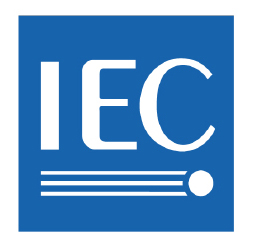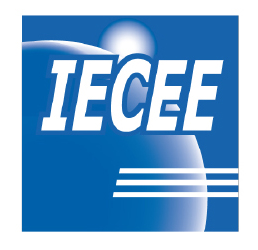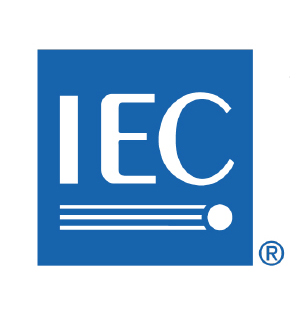CIRCUIT BREAKER INDUSTRIES LTD
CIRCUIT BREAKER INDUSTRIES LTD
| Address(es) |
|
| Website | Not available |
| Status | WITHDRAWN |
| Acceptance date | 2019-04-16 |
Further information
Stage | Country | Name |
|---|---|---|
2 | Denmark |
LEGEND: Scope Limitations
- RA : Audio amplifiers with audio power > 0,5 Watts excluded
- RC : Apparatus with connection(s) to a cable distribution system excluded
- RSH : Shredders excluded
- RT : Apparatus with connection(s) to a telecommunication network excluded
- RV : CRT (cathode ray tubes)/ picture tubes, plasma/LCD or other video apparatus excluded
- ROUT : Equipment intended for installation outdoors excluded
- RWPT : Wireless power transmitter excluded
Category | Name | Tests/Clauses | Acceptance Date | Responsible National Certification Body |
|---|---|---|---|---|
POW | IEC 60947-1:2020 | 8.1.2.2 Glow wire testing9.2.5 Mechanical and electrical properties of terminals8.2.1.2 Limits of operation of power operated equipment8.2.1.3 Limits of operation of under-voltage relays and releases8.2.1.4 Limits of operation of shunt releases | 2022-06-23 | |
POW | IEC 60947-1:2007/AMD2:2014 | 7.1.2.2 Glow wire testing8.2.4 Mechanical and electrical properties of terminals7.2.1.2 Limits of operation of power operated equipment7.2.1.3 Limits of operation of under-voltage relays and releases7.2.1.4 Limits of operation of shunt releases | 2019-11-20 | |
POW | IEC 60947-2:2016 | 8.3.3.2 Tripping Limits and characteristics8.3.3.3 Dielectric properties8.3.3.4 Mechanical operation and operational performance capabilities8.3.3.5 Overload Performance8.3.3.6 Verification of dielectric withstand8.3.3.7 Verification of temperature-rise 8.3.3.8 Verification of overload releases8.3.3.9 Verification of undervoltage and shunt releases8.3.3.10 Verification of main contact position8.3.4.2 Rated service short-circuit breaking capacity8.3.4.3 Verification of operational capability8.3.4.4 Verification of dielectric withstand8.3.4.5 Verification of temperature-rise8.3.4.6 Verification of overload releases8.3.5.2 Verification of overload releases8.3.5.3 Rated ultimate short-circuit breaking capacity 8.3.5.4 Verification of dielectric withstand8.3.5.5 Verification of overload releases8.3.6.2 Verification of overload releases8.3.6.3 Rated short-time withstand current8.3.6.4 Verification of temperature-rise8.3.6.5 Short-circuit breaking capacity at maximum short-time withstand current8.3.6.6 Verification of dielectric withstand8.3.6.7 Verification of overload releases8.3.7.2 Short-circuit at the selectivity limit current8.3.7.3 Verification of temperature-rise8.3.7.4 Verification of dielectric withstand8.3.7.5 Verification of overload releases8.3.7.6 Short-circuit at 1,1 times take-over current8.3.7.7 Short-circuit at ultimate short-circuit breaking capacity8.3.7.8 Verification of dielectric withstand8.3.7.9 Verification of overload releases8.3.8.2 Verification of overload releases8.3.8.3 Rated short-time withstand current8.3.8.4 Rated service short-circuit breaking capacity8.3.8.5 Verification of operational performance capability8.3.8.6 Verification of dielectric withstand8.3.8.7 Verification of temperature-rise8.3.8.8 Verification of overload releasesB.8.2 Verification of operating characteristicsB.8.3 Verification of dielectric propertiesB.8.4 Verification of the operation of the test device at the limits of rated voltageB.8.5 Verification of the limiting value of the non-operating current under over-currentconditionsB.8.6 Verification of the resistance against unwanted tripping due to surge currents resulting from impulse voltagesB.8.7 Additional verifications for CBRs of types A and BB.8.8 Additional verifications for CBRs of type BB.8.9 Verification of the behaviour of CBRs functionally dependent on-line voltage classified under B.3.1.2.1B.8.10 Verification of the behaviour of CBRs functionally dependent on-line voltage classified under B.3.1.2.2B.8.11 Verification of the residual short-circuit making and breaking capacity C.2 Test of individual pole short-circuit breaking capacityC.3 Verification of dielectric withstandC.4 Verification of overload releaseH.2 Individual pole short-circuitH.3 Verification of dielectric withstandH.4 Verification of overload releasesP.8.3.9 Critical d.c. load current testP.8.3.10 Thermal cycling testP.8.3.11 Climatic test | 2021-07-05 | |
POW | IEC 60947-2:2016/AMD1:2019 | 8.3.3.2 Tripping Limits and characteristics8.3.3.3 Dielectric properties8.3.3.4 Mechanical operation and operational performance capabilities8.3.3.5 Overload Performance8.3.3.6 Verification of dielectric withstand8.3.3.7 Verification of temperature-rise 8.3.3.8 Verification of overload releases8.3.3.9 Verification of undervoltage and shunt releases8.3.3.10 Verification of main contact position8.3.4.2 Rated service short-circuit breaking capacity8.3.4.3 Verification of operational capability8.3.4.4 Verification of dielectric withstand8.3.4.5 Verification of temperature-rise8.3.4.6 Verification of overload releases8.3.5.2 Verification of overload releases8.3.5.3 Rated ultimate short-circuit breaking capacity 8.3.5.4 Verification of dielectric withstand8.3.5.5 Verification of overload releases8.3.6.2 Verification of overload releases8.3.6.3 Rated short-time withstand current8.3.6.4 Verification of temperature-rise8.3.6.5 Short-circuit breaking capacity at maximum short-time withstand current8.3.6.6 Verification of dielectric withstand8.3.6.7 Verification of overload releases8.3.7.2 Short-circuit at the selectivity limit current8.3.7.3 Verification of temperature-rise8.3.7.4 Verification of dielectric withstand8.3.7.5 Verification of overload releases8.3.7.6 Short-circuit at 1,1 times take-over current8.3.7.7 Short-circuit at ultimate short-circuit breaking capacity8.3.7.8 Verification of dielectric withstand8.3.7.9 Verification of overload releases8.3.8.2 Verification of overload releases8.3.8.3 Rated short-time withstand current8.3.8.4 Rated service short-circuit breaking capacity8.3.8.5 Verification of operational performance capability8.3.8.6 Verification of dielectric withstand8.3.8.7 Verification of temperature-rise8.3.8.8 Verification of overload releasesB.8.2 Verification of operating characteristicsB.8.3 Verification of dielectric propertiesB.8.4 Verification of the operation of the test device at the limits of rated voltageB.8.5 Verification of the limiting value of the non-operating current under over-currentconditionsB.8.6 Verification of the resistance against unwanted tripping due to surge currents resulting from impulse voltagesB.8.7 Additional verifications for CBRs of types A and BB.8.8 Additional verifications for CBRs of type BB.8.9 Verification of the behaviour of CBRs functionally dependent on-line voltage classified under B.3.1.2.1B.8.10 Verification of the behaviour of CBRs functionally dependent on-line voltage classified under B.3.1.2.2B.8.11 Verification of the residual short-circuit making and breaking capacity C.2 Test of individual pole short-circuit breaking capacityC.3 Verification of dielectric withstandC.4 Verification of overload releaseH.2 Individual pole short-circuitH.3 Verification of dielectric withstandH.4 Verification of overload releasesP.8.3.9 Critical d.c. load current testP.8.3.10 Thermal cycling testP.8.3.11 Climatic test | 2021-07-05 | |
POW | IEC 60947-3:2020 | 9.3.4.2 Temperature-rise9.3.4.3 Dielectric properties9.3.4.4 Making and breaking capacities9.3.4.5 Dielectric verification9.3.4.5 Leakage current9.3.4.7 Temperature-rise verification9.3.4.8 Strength of actuator mechanism9.3.5.2 Operational performance9.3.5.3 Dielectric verification9.3.5.4 Leakage current9.3.5.5 Temperature-rise verification9.3.6.2 Short-time withstand current9.3.6.3 Short-circuit making capacity9.3.6.4 Dielectric verification9.3.6.5 Leakage current9.3.6.6 Temperature-rise verification9.3.7.2.1 a) Circuit-breaker protected short-circuit withstand9.3.7.2.1 b) Circuit-breaker protected short-circuit making9.3.7.4 Dielectric verification9.3.7.5 Leakage current9.3.7.6 Temperature-rise verification9.3.7.3.1 a) Fuse protected short-circuit withstand9.3.7.3.1 b) Fuse protected short-circuit making9.3.7.4 Dielectric verification9.3.7.5 Leakage current9.3.7.6 Temperature-rise verification | 2022-06-23 | |
POW | IEC 60947-3:2008/AMD2:2015 | 8.3.3.1 Temperature-rise8.3.3.2 Dielectric properties8.3.3.3 Making and breaking capacities8.3.3.4 Dielectric verification8.3.3.5 Leakage current8.3.3.6 Temperature-rise verification8.3.3.7 Strength of actuator mechanism8.3.4.1 Operational performance8.3.4.2 Dielectric verification8.3.4.3 Leakage current8.3.4.4 Temperature-rise verification8.3.5.1 Short-time withstand current8.3.5.2 Short-circuit making capacity8.3.5.3 Dielectric verification8.3.5.4 Leakage current8.3.5.5 Temperature-rise verification | 2019-11-20 |



